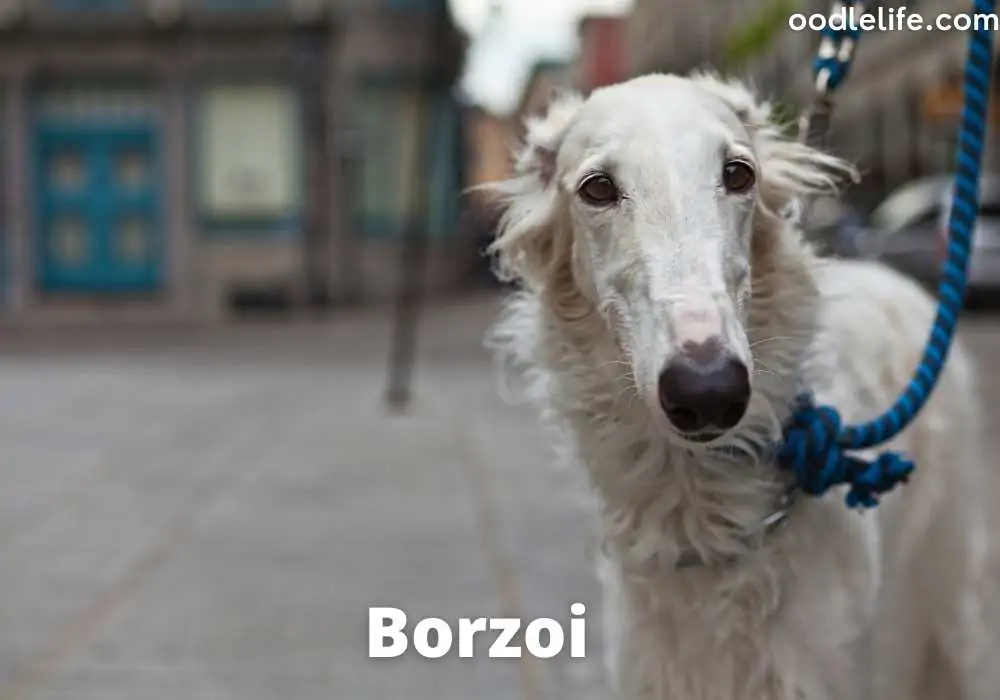Down Syndrome In Dogs (Can Dogs Have Down Syndrome?)
Down Syndrome is one of the most commonly reported chromosomal abnormalities in people. It’s recognizable by its distinctive characteristics, in particular flattened facial features and shortened stature.

But are there dogs with Down Syndrome? And if so, how can you spot it?
What is Down Syndrome?
To better understand whether there are dogs with Down Syndrome, it’s helpful to know what Down Syndrome is.
Down Syndrome is a genetic condition caused by partial or full duplication of chromosome 21.
Typically, a person has 46 chromosomes or 23 chromosome pairs within each cellular nucleus. Genetic information is recorded in genes within the nucleus, and those gene groups form the structures we call chromosomes.
Chromosomes and the pairs they form contain all the DNA and genetic material that makes people unique. You inherit half that genetic content from each parent.
Down Syndrome occurs when that information mutates. Instead of having 23 chromosome pairs, people with Down Syndrome also have a full or partial replica of chromosome 21. The quirk caused by this wrinkle in DNA presents externally as Down Syndrome.
Types of Down Syndrome
There are three diagnosable types of Down Syndrome. These are:
- Trisomy 21
- Translocation Down Syndrome
- Mosaic Down Syndrome
Trisomy 21
Trisomy 21 is the type of Down Syndrome most people with Down Syndrome present with. People with Trisomy 21 possess three copies of chromosome 21 in each cell.
Translocation Down Syndrome
Approximately 3% of people with Down Syndrome express translocation Down Syndrome. In this presentation, there is still a complete or partial copy of chromosome 21, but it isn’t a separate chromosome 21.
In translocation Down Syndrome the extra chromosome 21 attaches itself to a different and unrelated part of the DNA strand, whereas chromosome 21 exists in triplicate for people with Trisomy 21.

Mosaic Down Syndrome
Mosaic Down Syndrome is a mix of Trisomy 21 and Translocation. Some cells possess multiple copies of chromosome 21, while others transpose the replica information elsewhere. Children with Mosaic Down Syndrome often exhibit fewer features characteristic of Down Syndrome because of the reduced number of chromosomal copies present in their DNA.
Down Syndrome Characteristics
Further, to discuss dogs with Down Syndrome, you need to know what characteristics this genetic condition presents with.
There are various characteristics associated with Down Syndrome. These include:
- Palmar Crease
- Flattened facial features, particularly at the bridge of the nose
- Eyes with an almond shape that slant upwards
- Short neck
- Small ears, hands, and feet
- Short stature
- Shortened baby finger that sometimes curves in towards the thumb
- Poor muscle tone or loose muscle joints
- White spots on irises
Because people are unique, you may see some or all of these traits in people with down syndrome. But how prominent they are may vary on an individual level.
It’s also important to understand that while people with down syndrome may share certain traits, genetic composition means they will always look more like their immediate family than one another.
Down Syndrome in people can also present with cognitive impairment. Parents of children with Down syndrome may notice they are slower to speak than their peers and that their IQ is mild to moderately low by comparison to others.
Can Dogs Have Down Syndrome?
So, that’s Down Syndrome in people explained. But are there dogs with Down Syndrome?

Genetically speaking, there’s a lot of overlap between dogs and people. That’s why, when researching canine illnesses like cancer, human research is the immediate point of reference for most vets.
But while dogs have much in common with humans, there are also crucial differences. For instance, instead of the 23 chromosome pairs found in human genes, dogs have 39.
In people, it’s the full or partial copy of chromosome 21 that manifests as Down Syndrome. But dogs have so much more genetic material to record that duplicating that chromosome would have significantly different ramifications.
That’s why you don’t see dogs with Down Syndrome. So far, no one has recorded instances of dogs with Down Syndrome, and vets have posited several theories. These are that:
- Chromosomal abnormalities that would result in dogs with Down Syndrome instead lead to premature death
- The genetic testing to diagnose dogs with Down Syndrome has not been developed or is unavailable
- Down Syndrome doesn’t exist in dogs
Moreover, even if there were dogs with Down Syndrome, it’s entirely possible that it would present somewhere else in their DNA because of dogs’ wider genetic makeup.
That said, the information on the human chromosome 21 does appear elsewhere in dogs, making dogs with Down Syndrome a hypothetical possibility.
Scientists suspect that one of the primary reasons cases of dogs with Down Syndrome don’t get reported is because while it would take up to two years for symptoms to fully emerge, puppies that might have Down Syndrome often die in utero or shortly after birth.
Significantly, because of the cognitive impairments associated with Down Syndrome, dogs with Down Syndrome would take longer to learn to feed and die within days, especially in a large litter with other puppies competing for the same food.
Conditions That Present Like Down Syndrome in Dogs
That said, there are other genetic predispositions in dogs that can appear like Down Syndrome. Some of these are:
- Congenital hyperthyroidism
- Pituitary Dwarfism
- Congenital Hydrocephalus
- Portosystemic Shunt
Congenital Hyperthyroidism
While there are no cases of dogs with Down Syndrome, it’s easy to understand why many people misinterpret congenital hyperthyroidism as Down Syndrome in their dogs.
For one thing, it shares many of the same symptoms, including:
- Protruding tongue
- Short limbs
- Cognitive delay
- Weak muscle tone
- Eyes and ears are late to open
However, Scientists found that early replacement therapy in dogs and cats mitigated many of these symptoms. The purpose of replacement therapy is to enhance the hormone levels in the thyroid. When effective, dogs experience longer lifetimes and normal growth rates.
Because Down Syndrome presents at a chromosomal level, there would be no equivalent treatment for dogs with Down Syndrome.
Pituitary Dwarfism
Again, while dogs with Down Syndrome have yet to be diagnosed, pituitary dwarfism shares some of the symptoms.
This is a condition that results in a disordered pituitary gland and that in turn can lead to growth hormone deficiencies. Pituitary dwarfism is most typical of German Shepherds, but other breeds that are susceptible include:
- Karelian bear dog
- Saarloos wolfdog
- Czechoslovakian wolfdog
Pituitary dwarfism also occurs in:
- Spitz
- Miniature Pinschers
- Weimaraners
Most dogs with pituitary dwarfism start showing signs of the condition between ages two to six months. Symptoms such as shortened stature atypical of the affected breed and skin abnormalities significantly contribute to diagnosing the condition.
Other symptoms can include:
- proportional dwarfism
- retention of puppy coat
- hypotonic alopecia
- Delayed housetraining mastery
- Slow emergence of teeth

Congenital Hydrocephalus
Hydrocephalus means water on the brain. It manifests in dogs and cats with changes in behavior, which can be difficult to spot in congenital cases. But it also features a cognitive aspect.
Just as is hypothesized about dogs with Down Syndrome, dogs with congenital hydrocephalus experience cognitive impairment. They also exhibit delays in learning certain behaviors, like housebreaking.
Many toy breed dogs with hydrocephalus also feature an opening in the skull, called a molera. However, the presence of a molera is not a definite indicator of hydrocephalus.
Portosystemic Shunt
All mammals, dogs included, possess a shunt called the ductus venosus that carries blood through the liver when fetal. It collapses at birth, at which point the fetus no longer needs it.
When that doesn’t happen, the dog can develop a portosystemic shunt. An extra vein might not sound like a problem, but it’s the job of the portal vein to carry blood into the liver and detoxify it. With the shunt needlessly allowing blood to bypass the liver, that detoxification can’t happen, and that can lead to health problems.
As with other Down Syndrome adjacent conditions, there is a certain amount of symptom overlap in dogs. Signs to watch for include:
- Poor or underdeveloped muscles
- Disorientation
- Staring into space
- Seizures
- Circling
- Head pressing
Less commonly, dogs with a portosystemic shunt might exhibit:
- Excessive hydration
- Frequent urination
- Vomiting
- Diarrhea
While not the same as Down Syndrome, the underdeveloped musculature, in particular, is typical of how you might expect dogs with Down Syndrome to present.

Can Dogs Get Down Syndrome Takeaways
Are there dogs with Down Syndrome? It’s hard to be definitive, but the consensus theorizes that dogs cannot get down syndrome. there aren’t. Even if chromosome 21 were duplicated, it would be unlikely to create dogs with Down Syndrome because dogs’ genetic makeup is different.
A dog’s chromosome 21 is not the same as a human’s chromosome 21, and replication would not necessarily result in trisomy. That means it’s unlikely you’ll see dogs with Down Syndrome.
However, it’s theorized this is partly because dogs with Down Syndrome don’t survive to term, or if they do, they die during or shortly after birth. This makes sense. Children with Down Syndrome often struggle to feed because Down Syndrome adversely affects the mouth muscles.
Humans compensate for this by feeding babies with Down Syndrome via pipit until they can latch successfully. Dogs are unable to give that kind of assistance, and since dogs with Down Syndrome would be hard to spot, humans can’t intervene, either.
But while dogs with Down Syndrome have yet to be reported, there are other conditions dogs can develop that share certain Down Syndrome symptoms.
These include:
- Congenital hyperthyroidism
- Pituitary Dwarfism
- Congenital Hydrocephalus
- Portosystemic Shunt
If you notice signs or symptoms of any of these conditions in your dog, the most effective treatment is to report your suspicions to your vet for diagnostic confirmation.
In the meantime, watch your dog closely and enjoy the canine companionship.
